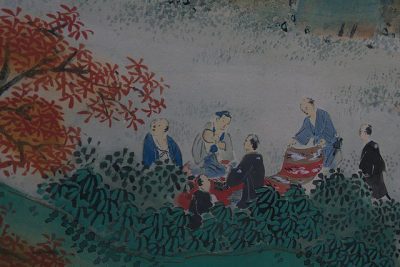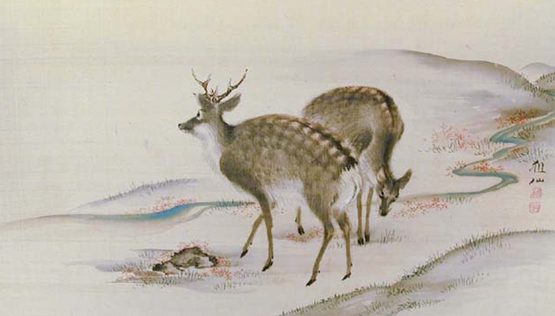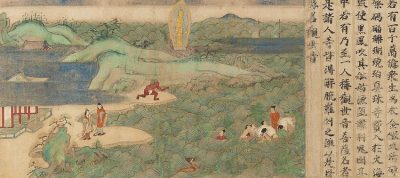Japanese Art and Buddhism, Culture, and Nature
Lee Jay Walker
Modern Tokyo Times

The esteemed Japanese artist Yamamoto Baiitsu (1783–1856) was born in Nagoya, a city renowned for its deep artistic and cultural traditions. His father, Yamamoto Yumigiemon, a skilled sculptor, nurtured in him a sensitivity toward form, texture, and spiritual depth from an early age. Thus, Baiitsu’s childhood unfolded within a refined milieu where the arts were not merely practiced but lived.
Profoundly enamored with Chinese art and culture, Baiitsu drew upon its elegant brushwork and poetic refinement, harmonizing these with Japanese sensibilities. His vision transcended imitation—absorbing diverse influences and reimagining them through his own contemplative lens. In this fusion, one perceives an artist attuned not only to the aesthetics of painting but also to the wider realm of high culture: the cadence of classical poetry, the quiet ritual of tea preparation, and the meditative pursuit of beauty that binds the cultural worlds of China and Japan.

The celebrated Japanese artist Mori Sosen (1747–1821) earned renown for his mesmerizing portrayals of animals, where vitality and grace merge in perfect harmony. Among his most captivating subjects were monkeys, which he rendered with an intimacy that revealed both their playful spirit and human-like sensitivity. His brush seemed to breathe life into fur and motion alike—capturing each gesture with poetic precision.
Sosen also held a deep affection for deer, creatures often associated with purity and the sacred realm of nature in Japanese aesthetics. In his works, they move silently through misty landscapes, embodying a quiet reverence for the natural world that lies at the heart of traditional Japanese art.

Sugawara Mitsushige, a distinguished calligrapher of the thirteenth century, stands as a luminous figure in the spiritual and artistic landscape of medieval Japan. His art, steeped in the Buddhist spirit of his age, transcended mere technique to become an act of devotion. The scrolls he dedicated to the Bodhisattva Kannon embody both discipline and grace—each brushstroke a quiet meditation, each curve of ink an offering of faith.
In his renderings of the Universal Gate (Fumonbon), Chapter 25 of the Lotus Sutra, Mitsushige’s lines breathe with the radiance of timeless compassion. The serene luminosity of these images continues to whisper through the centuries, dissolving the boundaries between art, prayer, and eternity.
The Bodhisattvas Kannon (Bosatsu in Japan) and Jizō remain deeply woven into the spiritual fabric of Japan. Kannon, the embodiment of infinite mercy, pours forth compassion like a gentle spring through the anguish of humankind—while Jizō, steadfast guardian of travelers and lost souls, stands as a symbol of unfaltering love and solace. Together, their divine presence continues to illuminate the path of tenderness and faith, harmonizing the ancient pulse of Buddhism with the quiet heart of modern Japan.

Modern Tokyo News is part of the Modern Tokyo Times group
http://moderntokyotimes.com Modern Tokyo Times – International News and Japan News
http://sawakoart.com – Sawako Utsumi’s website and Modern Tokyo Times artist
https://moderntokyonews.com Modern Tokyo News – Tokyo News and International News
PLEASE JOIN ON TWITTER
https://twitter.com/MTT_News Modern Tokyo Times
PLEASE JOIN ON FACEBOOK